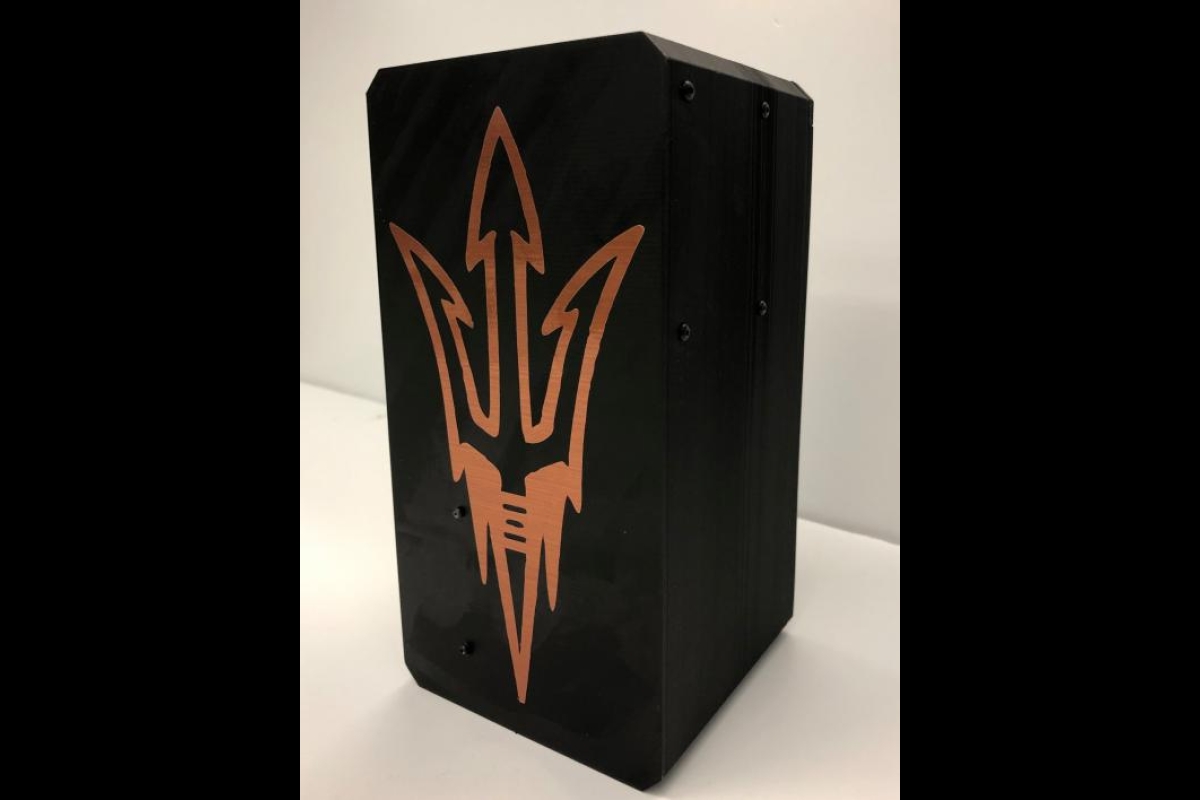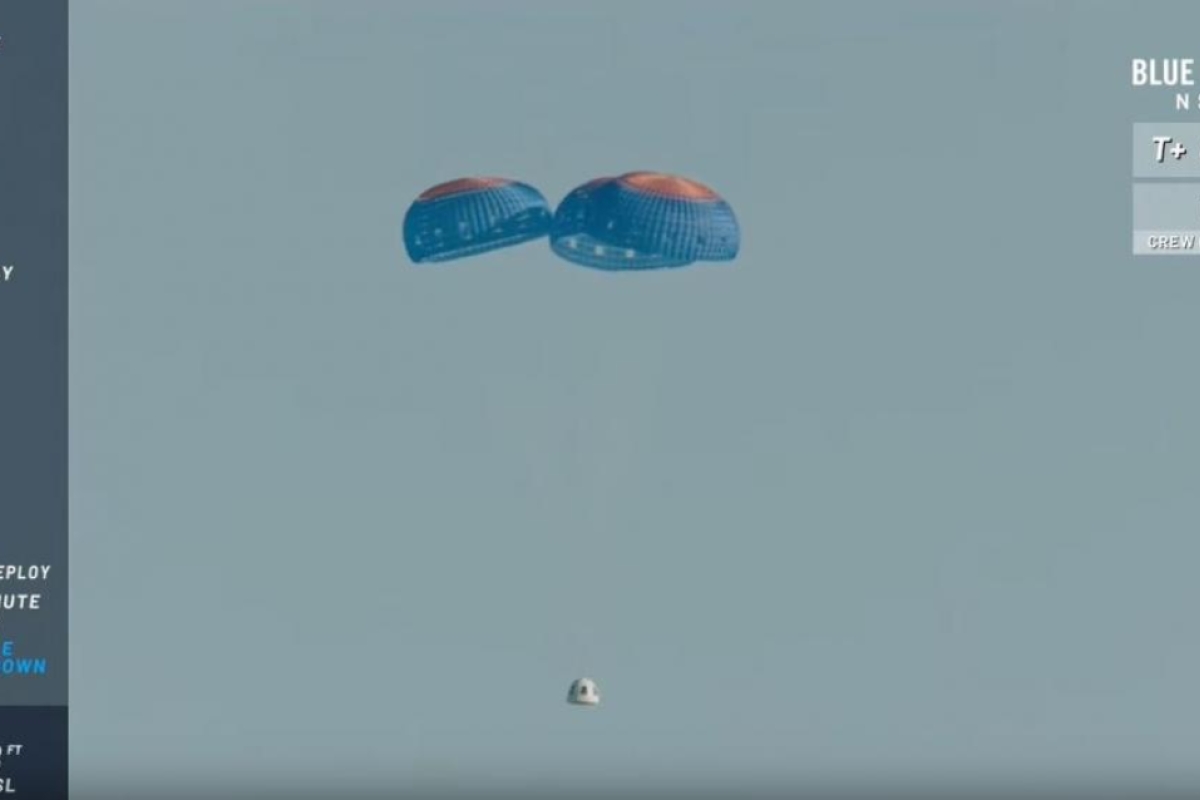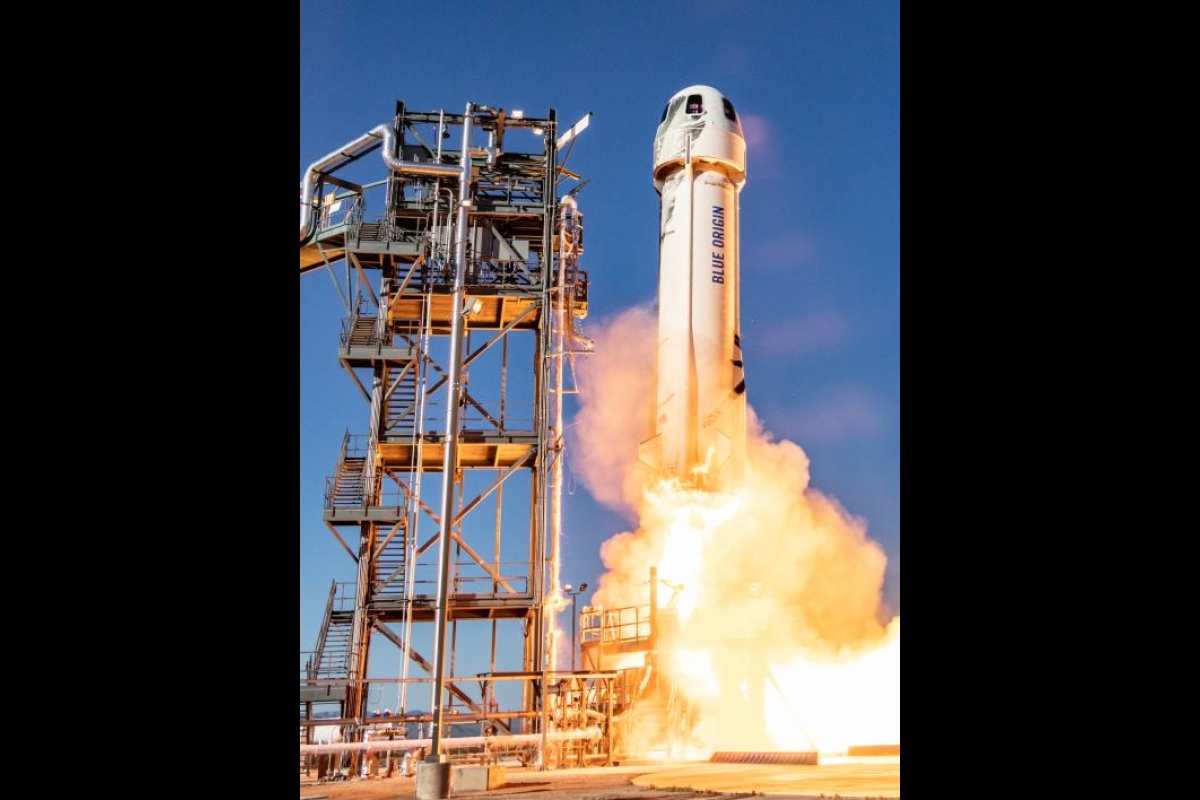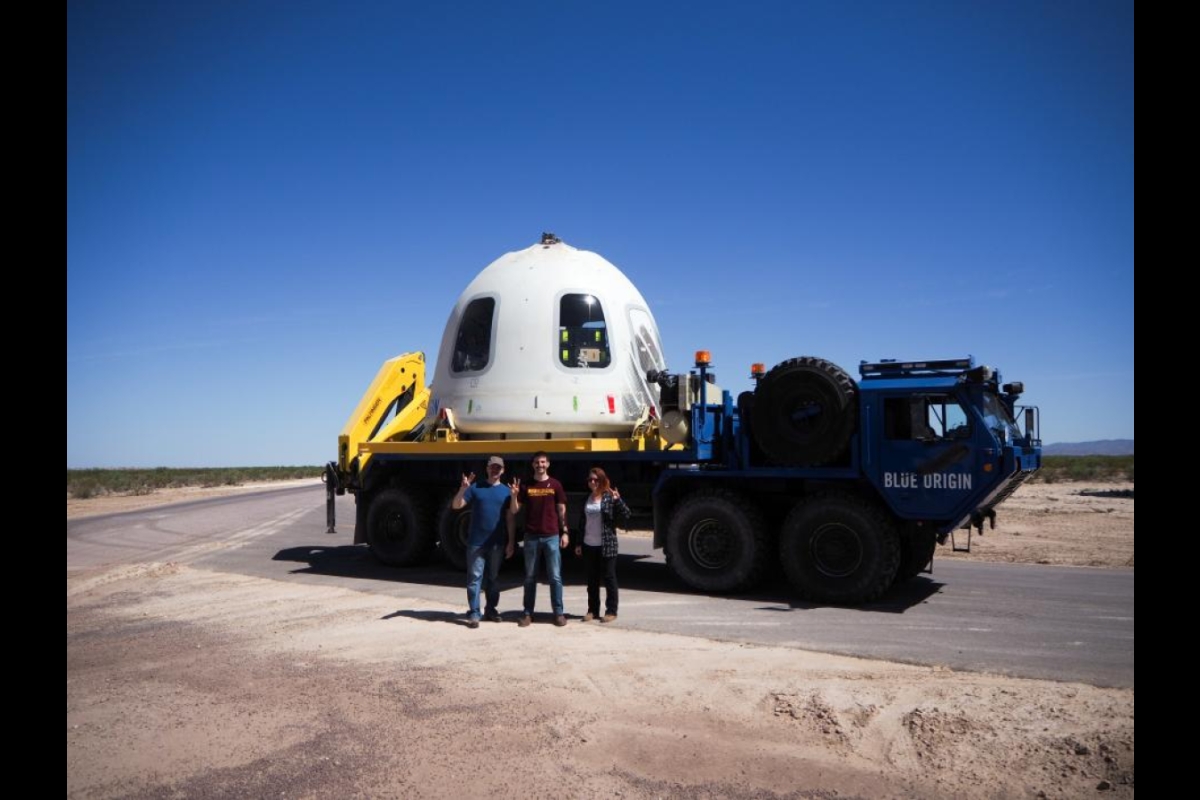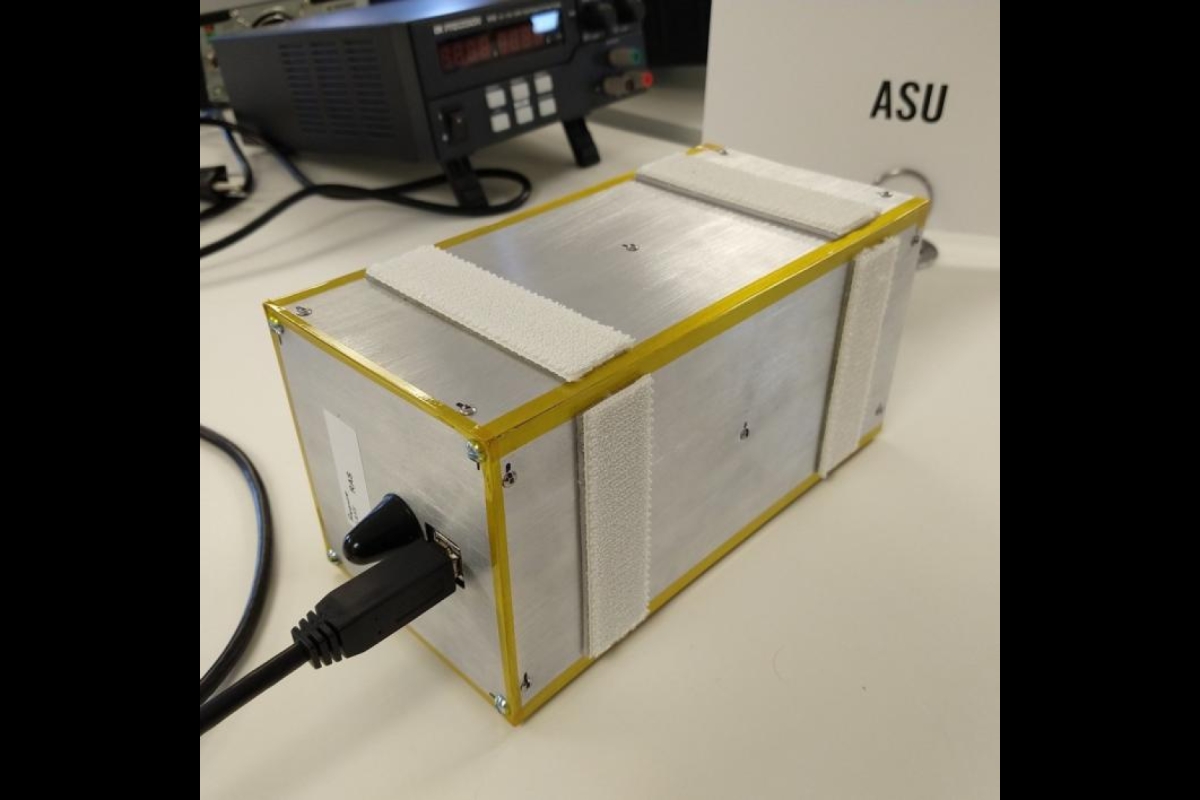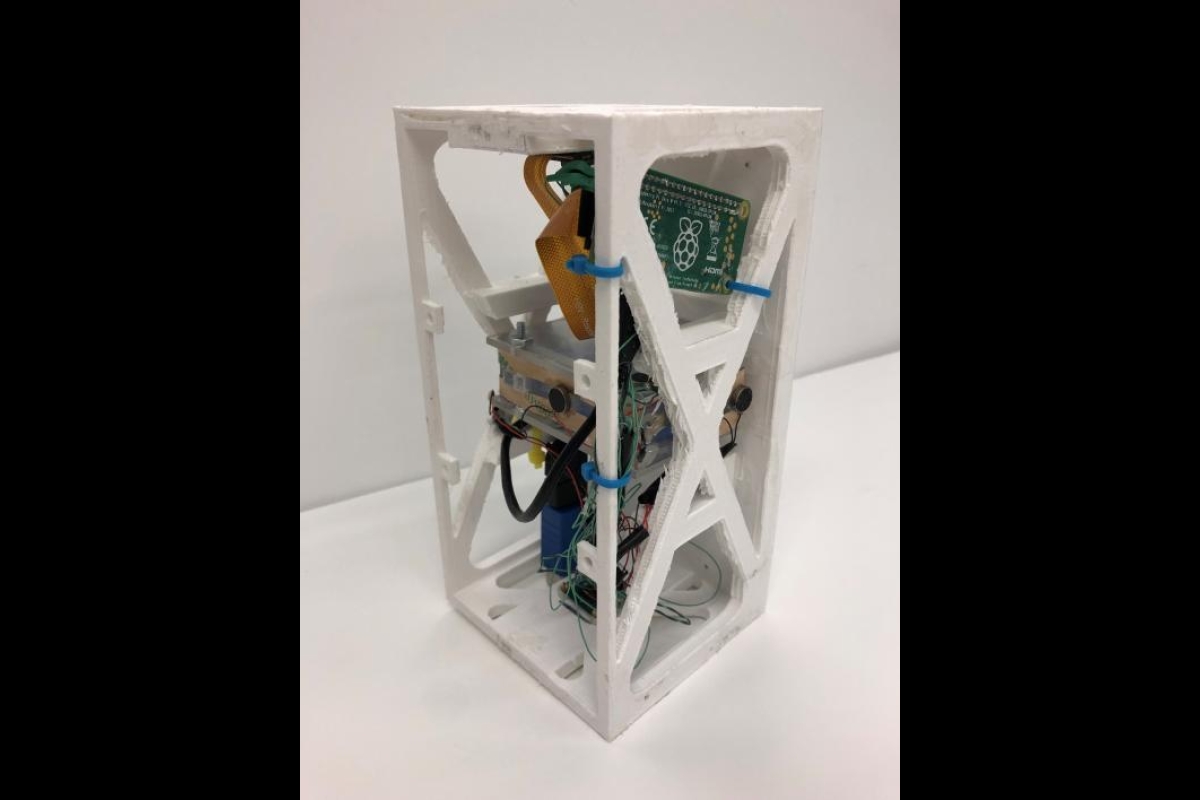ASU student-led payloads launched on Blue Origin space vehicle

Blue Origin's New Shepard space vehicle launches on May 2 in west Texas, with three ASU student-led payloads on board.
Three Arizona State University student-led payload projects launched into space Thursday at 6:34 a.m. Pacific Standard Time on Blue Origin’s New Shepard space vehicle.
The payloads launched from Blue Origin’s facility in west Texas, approximately two hours east of El Paso. The New Shepard vertical takeoff and landing vehicle is capable of carrying hundreds of pounds of payload per flight and is ultimately expected to carry six astronauts to altitudes beyond 100 kilometers, the internationally recognized boundary of space.
The student-led payloads were selected during a competitive pitching competition last year at ASU’s School of Earth and Space Exploration. To earn a spot, students were challenged to do one of three things for their payload project: Answer a science question, test technology development or engage the five senses (smell, taste, sight, touch, sound) in space.
The finalists’ payloads are the Suborbital Coagulation and Aggregation in Microgravity (science category), the Remote Acoustic Sensor (technology category) and Space Devils (five senses in space category). The teams are composed of students from both the Ira A. Fulton Schools of Engineering and the School of Earth and Space Exploration. They were built and designed at ASU and remotely by the students with guidance from ASU faculty mentors.
“These are the first-ever ASU student-designed and -built payloads to be launched into space and brought back to Earth,” said project lead Tanya Harrison, who is the director of research at ASU’s NewSpace Initiative. “The New Shepard suborbital rocket took our student payloads beyond the ‘Kármán line’ — the defined boundary of space.”
The payload slots on New Shepard were funded by ASU’s Interplanetary Initiative, a universitywide effort to build the future of humans in space; NewSpace, which is leading the integration of academic and commercial space enterprises using ASU’s strengths in space science, engineering and education; and by a generous donation from private donors Peter and Cathy Swan.
“These student-led payload projects show that the opportunity exists for ASU students to design, build and fly in space,” said Peter Swan, who is also an Interplanetary Initiative team member and space industry expert. “This collaboration with Blue Origin opens up the future to our ASU students."
New Shepard launch
Watching from Blue Origin’s West Texas Launch Site along with Harrison were student-payload team members Logan Sisca and David Bates. Sisca and Bates are team members of the Remote Acoustic Sensor (RAS) payload, which was designed to capture acoustic data from bees and record their vibrations, pressures and orientation in space.
"It is always rewarding to see your team's space hardware take flight, and this mission is no exception since our ASU engineering educations have led up to this moment,” said Sisca. “I am most excited to see the data and onboard video and I hope that the compelling in-space footage inspires future engineers and scientists to pursue their passion for exploration."
When the RAS payload team members arrived at Blue Origin’s launch site, they loaded 24 locally sourced honeybees into the payload's experiment chamber, which is about the size of a softball. The bees remained in the chamber for the duration of the mission and were provided with sugar cubes to maintain their energy levels. Following the successful completion of their space mission, the bees — also known as "Flapstronauts" — were released into the wild to pollinate crops on Earth.
“For our payload, we wanted to study the behavior of honeybees in space because, as prime pollinators, they are essential in any space colonization effort where crops are needed to be grown for food,” explained Sisca.
"The RAS payload has two goals,” said Bates. “The first is to observe the behavior of honeybees in the varying gravity and acceleration environments of space travel; and the second is to prove the viability of the remote acoustic sensor that measures air pressure variations like a microphone. RAS analyzes variations in light intensity that are produced when vibrating objects pass in front of the sensor and then converts that data into a sound file.”
As Bates explained, the RAS is able to "hear" objects in the vacuum of space and the successful operation of this experiment will verify that the RAS technology can operate aboard a spacecraft and that it can be used to gather information about the bees during flight.
“With good enough optical sensors, we can use ordinary light to hear vibrations even miles away,” added Danny Jacobs of the School of Earth and Space Exploration, who is a faculty mentor for the RAS team. “Given the task of demonstrating this technique on a rocket flight but constrained to a small box, the team conceived the novel application of monitoring insects. With much trial and error, the team recreated a RAS sensor, demonstrated it on bees and built a really nice experiment around it. This was all accomplished working remotely online and mailing hardware to each other. What a tour de force!”
Members of the original team include Ira A. Fulton Schools of Engineering electrical engineering undergrads Bates, Sisca, Bryan Trinidad and Roland Lizana. This team consisted entirely of online students spread across the country, as well as one student, Trinidad, who was working aboard a naval vessel in the Persian Gulf. While some team communication was done online, the team also shipped the payload around the world so each team member could physically work on it. Their faculty capstone leader is Mike Goryll with the School of Electrical, Computer and Energy Engineering.
“This project raises the technology readiness level of the remote acoustic technology which was invented by Dan Slater and promoted by Rex Ridenoure of Ecliptic Enterprises,” added Jacobs. “They were important mentors for this team and provided lots of help during the early concept development and testing of the sensor.”
Other ASU student-led payloads
The Suborbital Coagulation and Aggregation in Microgravity (SCAM) payload seeks to test the agglomeration of small particles, ranging from millimeter to centimeter in size, as they make collisions in microgravity, helping us to understand how planets form.
Original members of the team include School of Earth and Space Exploration undergraduates Pat Jackson (exploration systems design), Jason Pickering (astrophysics), Chris Huglin (exploration systems design), Jin Kim (astrophysics), Kevin White (astrobiology), Kanishka Nirmale (astrophysics) and Mitchell Drake (explorations systems design). Their faculty mentor is Chris Groppi with the School of Earth and Space Exploration.
The Space Devils “Five Senses” payload measures and collects data on sight, smell, taste, touch and sound in space. It has, as its centerpiece, an ASU Sparky figure attached to a spring. During ascent and descent, Sparky is pushed up and down, creating the illusion that Sparky is doing pushups, which is measured by an accelerometer. A camera recorded the pushups, a microphone captured the sounds of the spaceflight, and air was pulled into the payload and passed through scent paper to capture the smell of space.
The original members of the team include Ira A. Fulton Schools of Engineering mechanical engineering undergrads: Cody Bisbing, Gabby Bovaird, Clint Farnsworth, Josh Fixel, Peter Marple and Landon Wiltbank. Their faculty capstone leader is Abdelrahman Shuaib with the Mechanical Engineering Department.
More Science and technology

The Sun Devil who revolutionized kitty litter
If you have a cat, there’s a good chance you’re benefiting from the work of an Arizona State University alumna. In honor of…

ASU to host 2 new 51 Pegasi b Fellows, cementing leadership in exoplanet research
Arizona State University continues its rapid rise in planetary astronomy, welcoming two new 51 Pegasi b Fellows to its exoplanet…

ASU students win big at homeland security design challenge
By Cynthia GerberArizona State University students took home five prizes — including two first-place victories — from this year’s…


